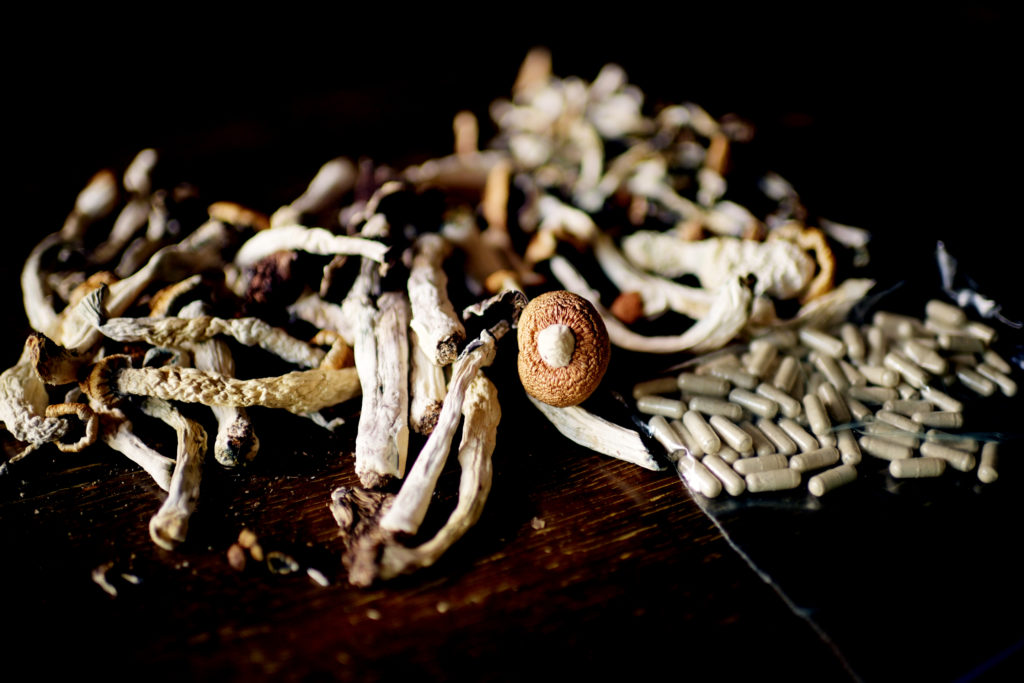Pink Buffalo Mushroom

In the vast tapestry of Earth’s ecosystems, there exists an array of organisms that captivate and intrigue with their unique characteristics. Among these wonders of nature, the Pink Buffalo Mushroom stands as a testament to the intricate beauty and enigmatic allure of the fungal kingdom. This extraordinary fungus, with its arresting pink hue and elusive nature, has long fascinated scientists and enthusiasts alike. In this article, we delve into the fascinating world of the Pink Buffalo Mushroom, exploring its biology, ecological significance, cultural relevance, and potential benefits.
The Pink Buffalo Mushroom:
An Overview: Scientifically known as Pleurotus djamor, the Pink Buffalo Mushroom is a species of oyster mushroom that belongs to the genus Pleurotus. Its distinctive pink coloration sets it apart from its more commonly encountered relatives, such as the Pearl Oyster Mushroom (Pleurotus ostreatus). Found in various regions across the globe, including tropical and subtropical forests, the Pink Buffalo Mushroom often grows in clusters on decaying wood, such as fallen logs or tree stumps.
Appearance and Characteristics:
One of the most striking features of the Pink Buffalo Mushroom is its vibrant pink to salmon-colored caps, which can range from pale pastel tones to deeper hues reminiscent of a sunset sky. These caps typically measure several centimeters to over a foot in diameter, depending on environmental conditions and the stage of growth. The mushroom’s gills, which radiate from the central stalk, are creamy white and provide a stark contrast to the vivid pink hues above. The stalk itself is often short and thick, providing stability for the cap.
Ecological Role and Habitat:
As decomposers, oyster mushrooms play a crucial role in ecosystem functioning by breaking down organic matter and recycling nutrients. The Pink Buffalo Mushroom is no exception, contributing to the decomposition of dead wood and aiding in the nutrient cycling process. Its preference for tropical and subtropical climates means that it thrives in regions with ample moisture and warmth, often appearing after periods of rainfall or high humidity. In the wild, it can be found in diverse habitats, from dense rainforests to urban parks.
Cultural Significance and Traditional Uses:
Across various cultures, mushrooms hold symbolic and culinary significance, and the Pink Buffalo Mushroom is no exception. In regions where it is native, such as parts of Asia and Africa, it has been traditionally consumed as a food source and valued for its purported medicinal properties. In some cultures, it is believed to possess aphrodisiac qualities or to enhance vitality and longevity. Additionally, the striking appearance of the Pink Buffalo Mushroom has made it a popular subject in art and folklore, inspiring myths and legends that celebrate its beauty and mysterious allure.
Nutritional and Medicinal Benefits:
Beyond its cultural significance, the Pink Buffalo Mushroom offers a range of potential health benefits. Like other members of the Pleurotus genus, it is rich in protein, vitamins, and minerals, making it a nutritious addition to the diet. Studies have also suggested that oyster mushrooms contain bioactive compounds with antioxidant, anti-inflammatory, and immunomodulatory properties, which may confer various health benefits, including potential protection against chronic diseases and support for immune function. However, further research is needed to fully elucidate the therapeutic potential of the Pink Buffalo Mushroom and its constituents.
Cultivation and Commercialization:
Given its aesthetic appeal and potential health benefits, the Pink Buffalo Mushroom has garnered interest among cultivators and entrepreneurs seeking to capitalize on its market potential. Cultivation techniques for oyster mushrooms, including the Pink Buffalo variety, typically involve inoculating a substrate, such as pasteurized straw or sawdust, with mushroom spawn and providing optimal conditions for growth, including humidity, temperature, and ventilation. While commercial cultivation of the Pink Buffalo Mushroom remains relatively limited compared to other oyster mushroom species, its unique coloration and potential health benefits have spurred efforts to scale up production and bring this captivating fungus to a wider audience.
Conclusion:
In the intricate web of life that envelops our planet, the Pink Buffalo Mushroom shines as a beacon of natural wonder and biological diversity. Its vivid pink caps and ecological significance underscore the remarkable beauty and importance of fungi in terrestrial ecosystems. As scientists continue to unravel the mysteries of this enigmatic species and explore its potential benefits, the Pink Buffalo Mushroom serves as a poignant reminder of the boundless marvels that await discovery in the natural world.





